How to recover missing files after an upgrade on Windows 10
Are your files nowhere to be found after an upgrade? In this guide, you'll find a few ways to get back missing files after upgrading to the latest version of Windows 10.
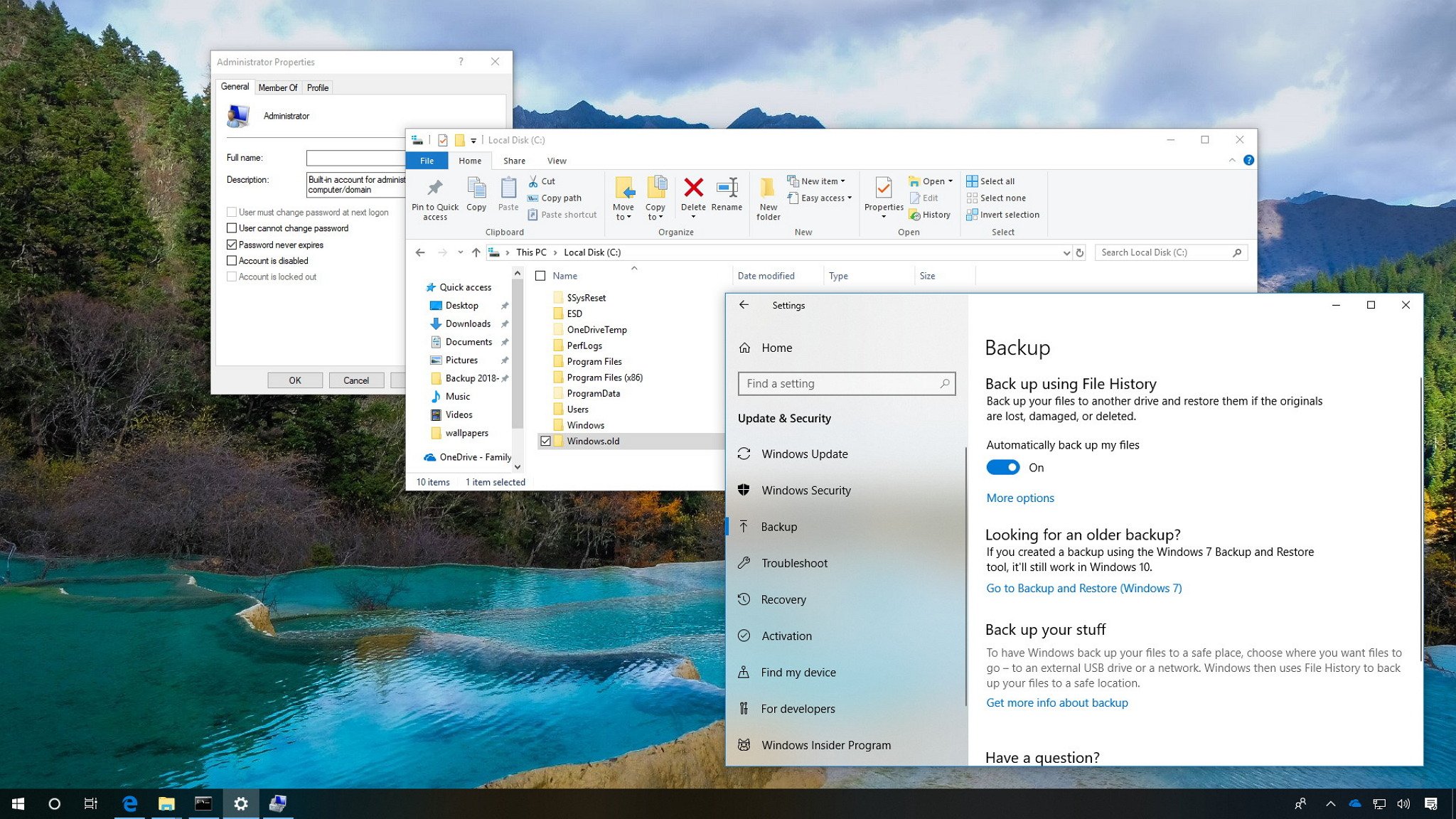
The setup process to upgrade to Windows 10 from a previous release, or from a previous version (such as Windows 8.1 or Windows 7), usually does a pretty good job preserving your files. However, in some scenarios, unexpected behaviors may occur that will cause your documents, pictures, music, and videos to suddenly disappear after the installation.
If this happens, not everything is lost just yet, as there are a number of ways to find and restore missing files.
In this Windows 10 guide, we'll walk you through a few ways you can get back your documents, pictures, music, and videos after upgrading to the latest version of the OS.
- How to recover files removing temporary account
- How to recover files using Administrator account
- How to recover files using search
- How to recover files using Windows.old folder
- How to recover files using backup
How to recover files removing temporary account
Immediately after upgrading to the latest version of Windows 10, you may notice that your files are no longer available, but this is because you're signed in using a temporary account.
You can quickly check if you're using a temporary profile using these steps:
- Open Settings.
- Click on Accounts.
- Click on Sync your settings.
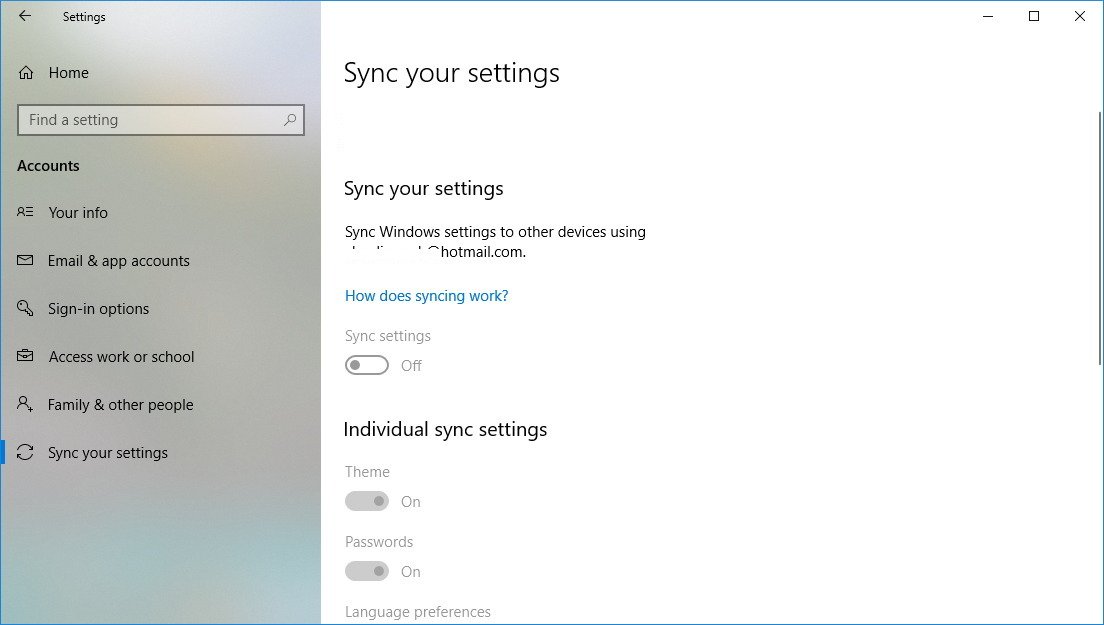
- If you see a message at the top that reads: "You are logged on with a temporary profile. Roaming options are currently unavailable," then reboot your computer.Note: It may take a few reboots until you see your account on the sign-in screen.
- Sign in with your account.
Once you've completed the steps, the temporary account should go away, and you should now be able to access your documents, pictures, and videos from your original account.
How to recover files using Administrator account
If you're upgrading from Windows 7 to Windows 10, and you created a Microsoft account during the process, your files may end up in the Administrator account, which is now disabled.
Get the Windows Central Newsletter
All the latest news, reviews, and guides for Windows and Xbox diehards.
To get back your missing personal files, you'll need to use the built-in local Administrator account using these steps:
- Open Start.
- Search for Computer Management, click the top result to open the experience.
- Browse the following path:
Computer Management > Local Users and Groups > Users - Double-click the Administrator account.
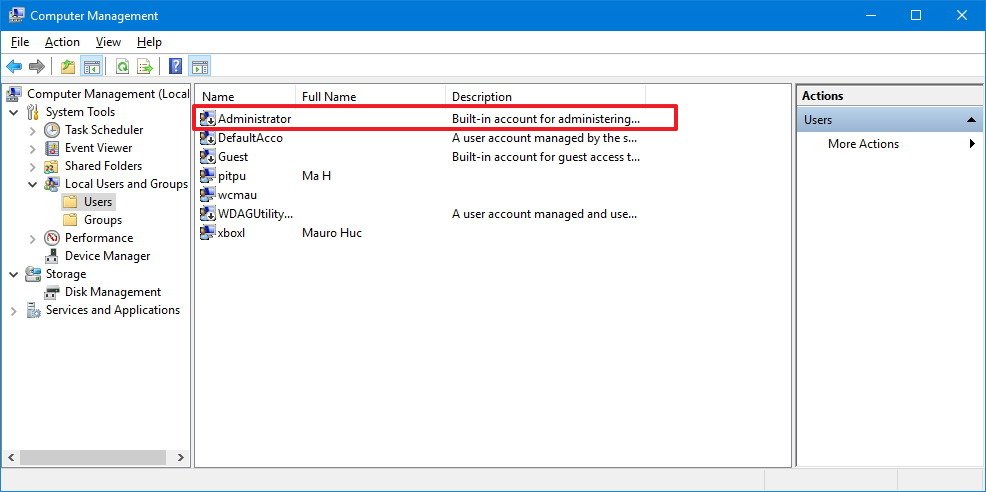
- Click the Account is disabled option.
- Click Apply.
- Click OK.
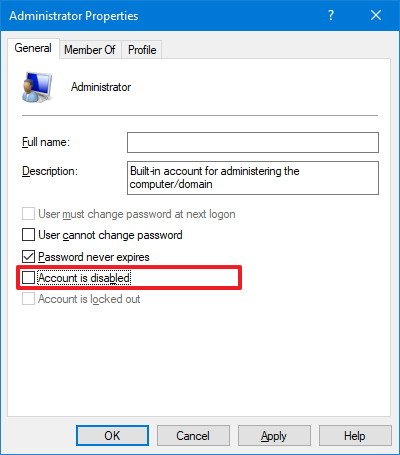
- Sign out of your current account.
- Sign in with the Administrator account.
After completing the steps, you should see your files again using the local Administrator account. Then the last thing left to do is to backup and restore all your files to the newly created account you configured using a Microsoft account.
How to recover files using search
You can also locate lost files using the search feature on Windows 10 with these steps:
- Open File Explorer (Windows key + E).
- On the left pane, click the This PC option.
- On the top-right, use the search box to locate your files.
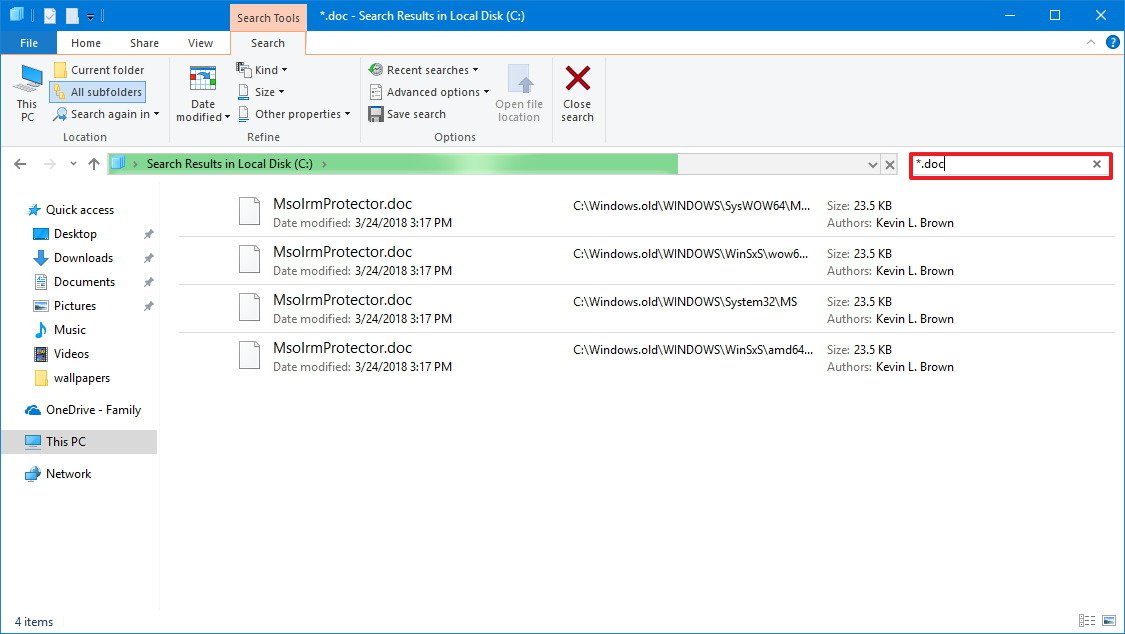
If you're looking for a specific type of files, you can use the asterisk (*) as a wildcard. For instance, you can use the *.doc search query to list all of your Microsoft Word documents.
Also, you can use the File Explorer Search tab options to refine your search. For example, you can click the Advanced options drop-down menu and make sure to include non-indexed locations. In addition, you can use the Kind drop-down menu to do quick searches, including for documents, pictures, videos, music, and more.
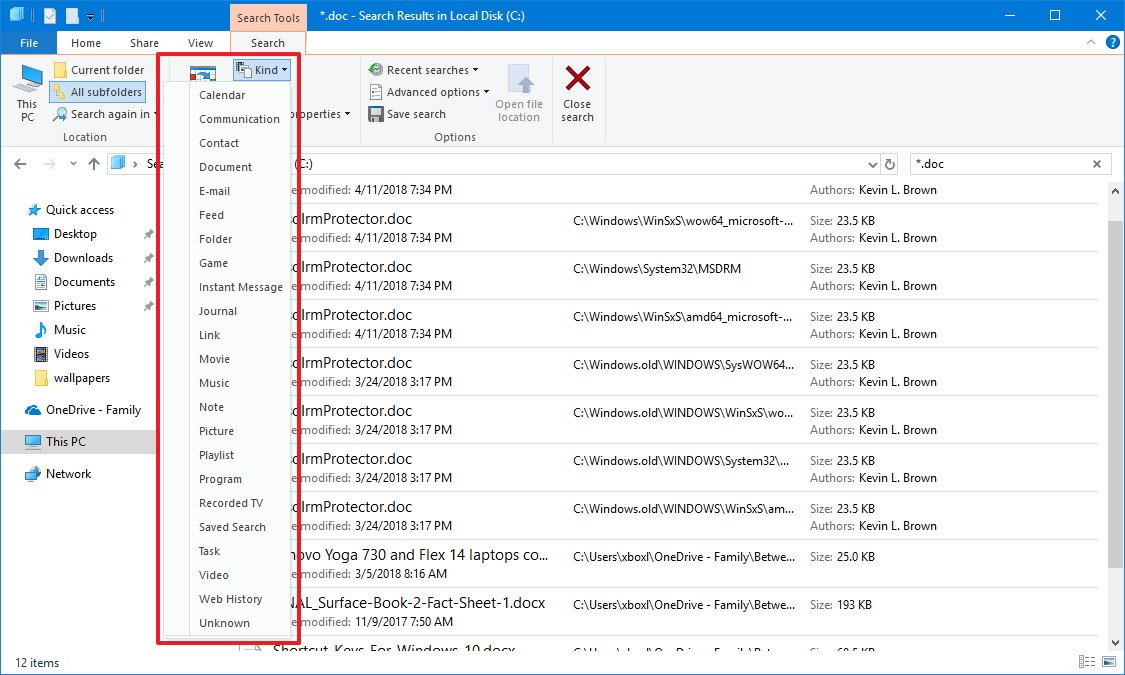
When upgrading to a new version of Windows 10, sometimes your personal files will move to a different folder. If you're able to find your files using search, right-click one of the files and select Open file location, and then make sure to move your data to the folder you want.
Show hidden files
Depending on your system configuration, you may not be able to see your files because they're hidden. On Windows 10, you can see hidden files using these steps:
- Open File Explorer.
- Click the View tab.
- Under "Show/hide section," check the Hidden items options.
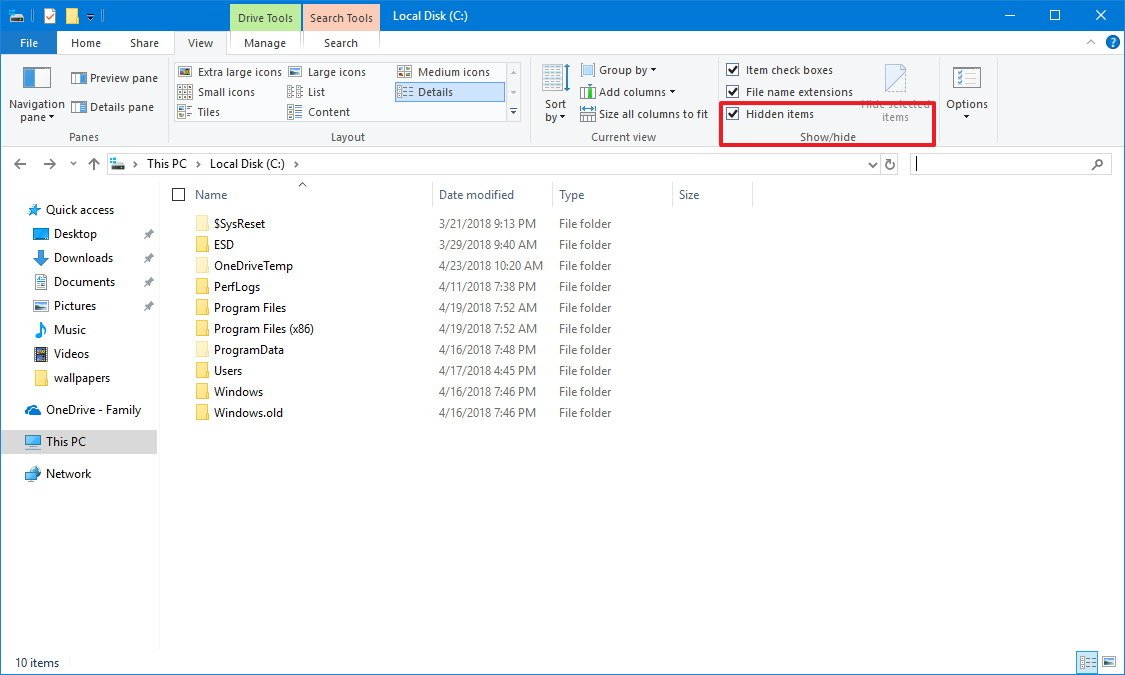
After completing the steps, try to use the search feature again to find your files.
How to recover files using Windows.old folder
If you installed Windows 10 using the upgrade process, or you went through a custom installation without deleting the main partition, then the setup will save a copy of your previous installation in the Windows.old folder, which you can use to recover your missing files.
To recover your files using the Windows.old folder, do the following:
- Open File Explorer.
- On the left pane, click the This PC option.
- Double-click the Local Disk (C:) drive.
- Double-click the Windows.old folder.
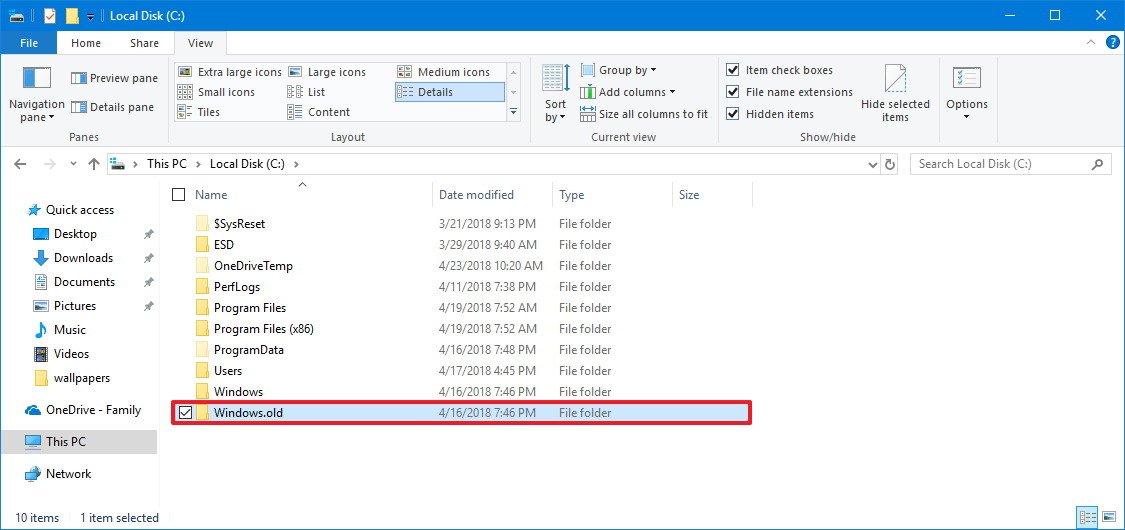
Once you've completed the steps, locate your personal files (likely to be stored in the "Users" folder), and move them to another location.
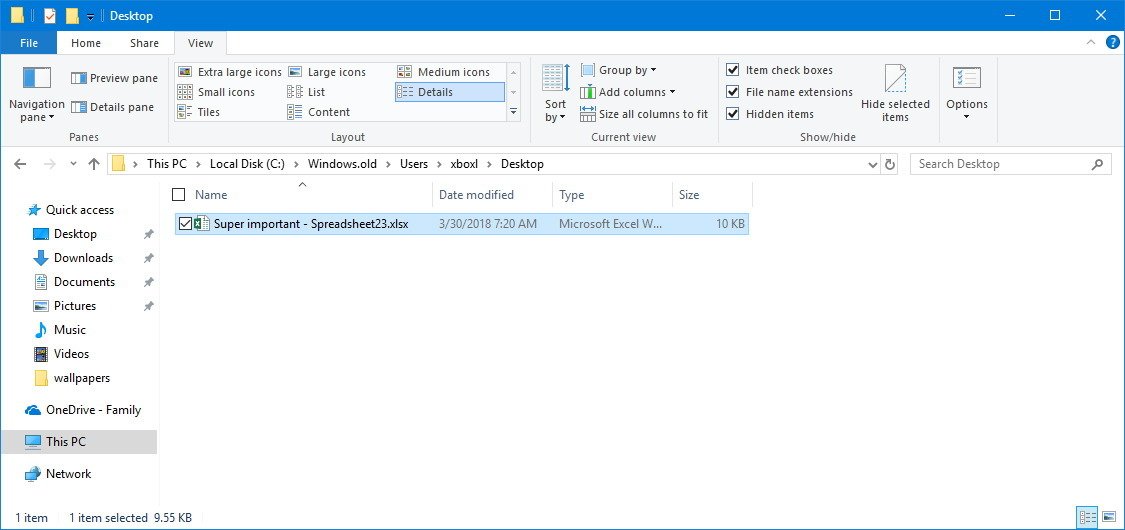
If you don't see the Windows.old folder, you may have upgraded using the clean installation process which erases everything on your computer. Something may have happened during the installation and copy of the previous installation was never saved. Or it's been more than 10 days since you upgraded to Windows 10, in which case the system deletes these files automatically.
How to recover files using backup
If none of the methods outlined above have worked to get back your lost files, then you'll need to use a previous backup to recover them. But bear in mind that the steps may vary depending on the backup method you used.
Below you'll find the steps to recover your files when using the built-in system tools and OneDrive. (If you used another tool, make sure to refer to your software vendor support site for specific instructions.)
Using System Image backup
If you used the System Image backup tool built into Windows 10, you won't be able to restore files individually, but you can connect the external drive with the backup files and then use this workaround:
- Open Start.
- Search for Computer Management, click the top result to open the experience.
- Browse the following path:
Storage > Disk Management - Click on Action.
- Select Attach VHD.
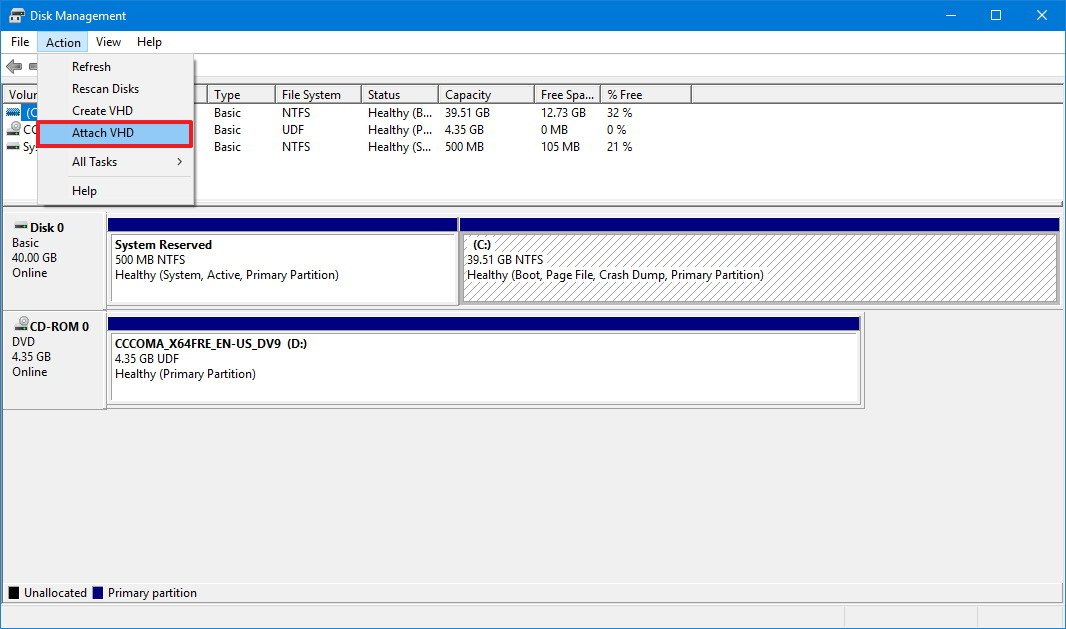
- Click the Browse button.
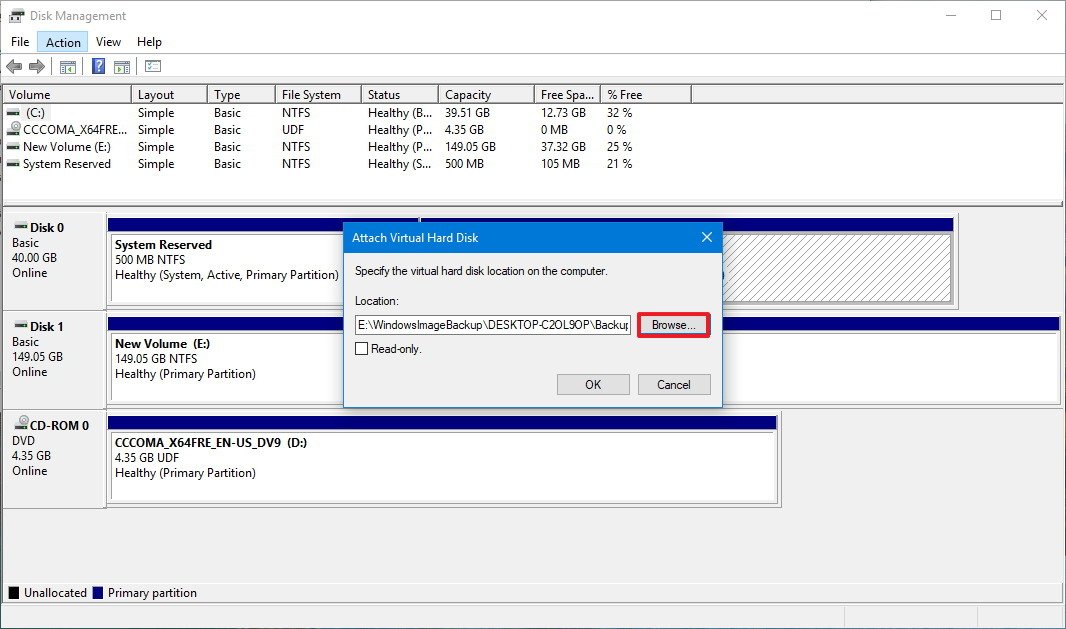
- Browse to the path where you saved the backup. Usually, it's in external drive within this folder path:
WindowsImageBackup\<COMPUTER-NAME>\Backup xxxx-xx-xx xxxxxx\ - Select the largest VHDX file.
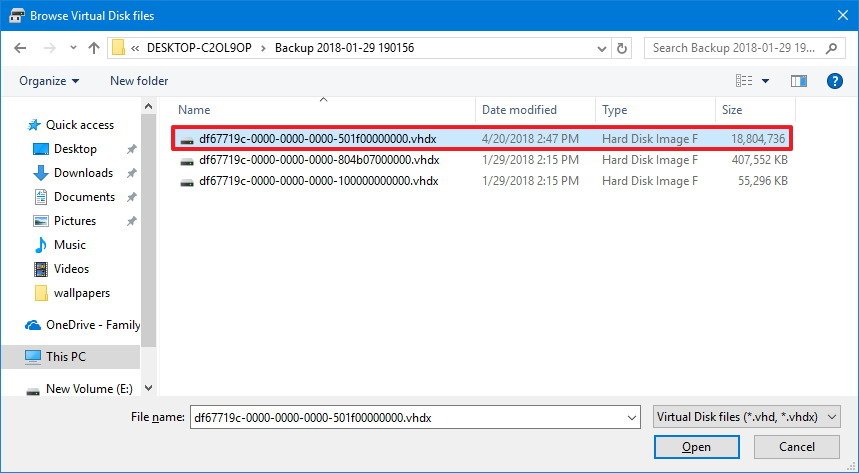
- Click Open.
- Click OK.
- Right-click the partition, and select the Change Drive Letter and Path option.
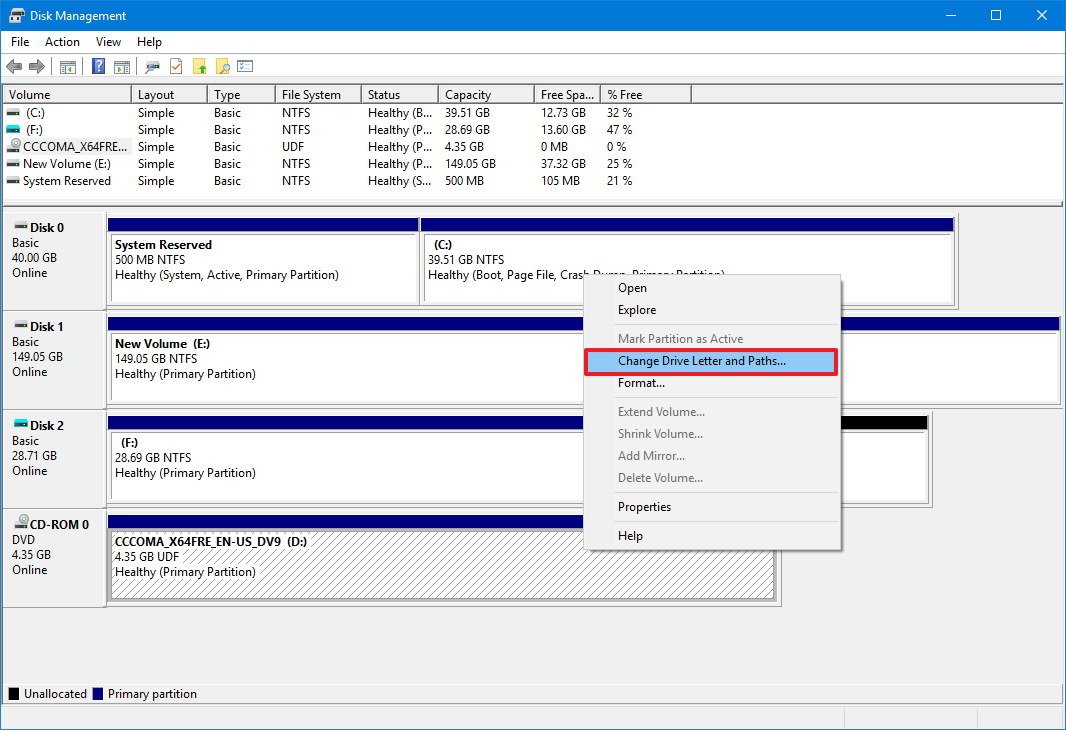
- Click the Add button.
- Select a drive letter. (Typically, you want to use the one that's already selected.)
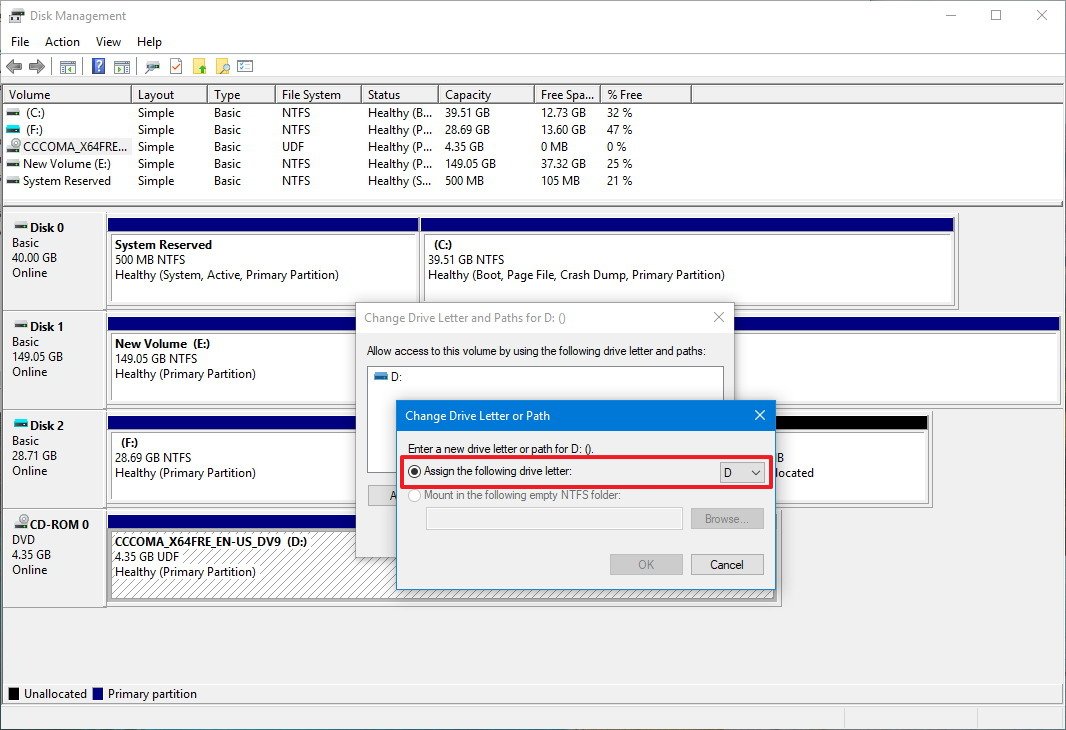
- Click OK.
Once you've completed the steps, open the drive using File Explorer, locate and copy your files to your computer.
It's a good idea to right-click the virtual drive, select the Detach VHD option when you're done copying the files to properly remove the virtual hard drive.
Using Windows 10 backup feature
In the case that you're using the Windows 10 backup feature. You can quickly restore one or multiple files using these steps:
- Open Control Panel.
- Click on System and Security.
- Click on Backup and Restore (Windows 7).
- Under "Restore," click the Restore my files button.
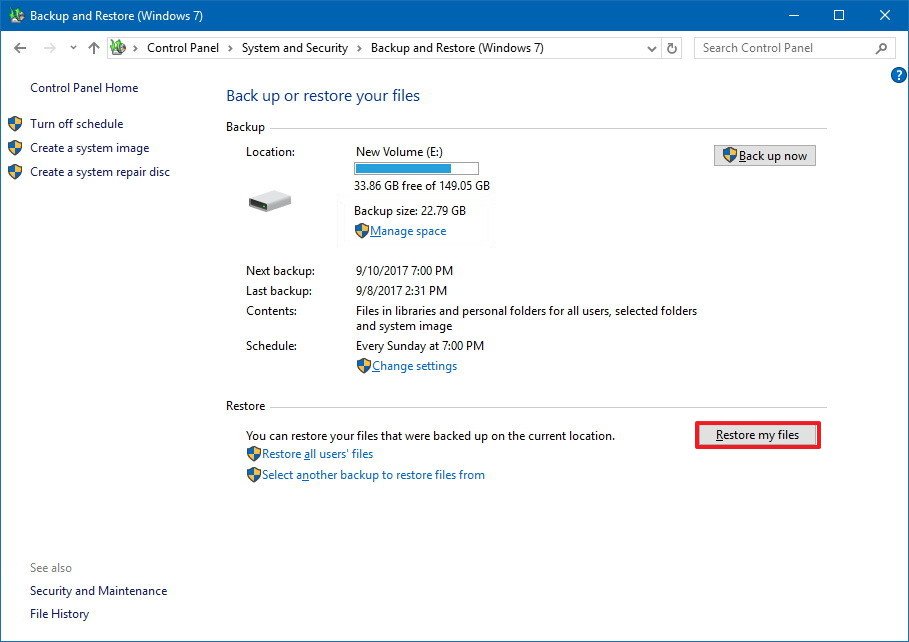
- Click the Browse for files button.
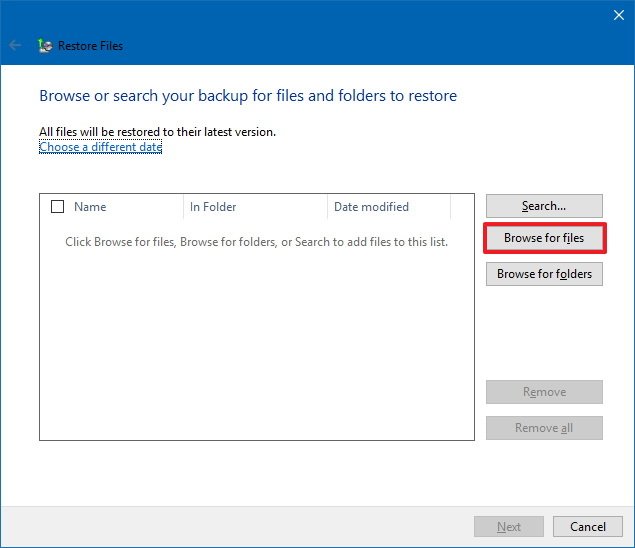
- Browse the backup and select the files you want to restore.
- Click the Add files button.
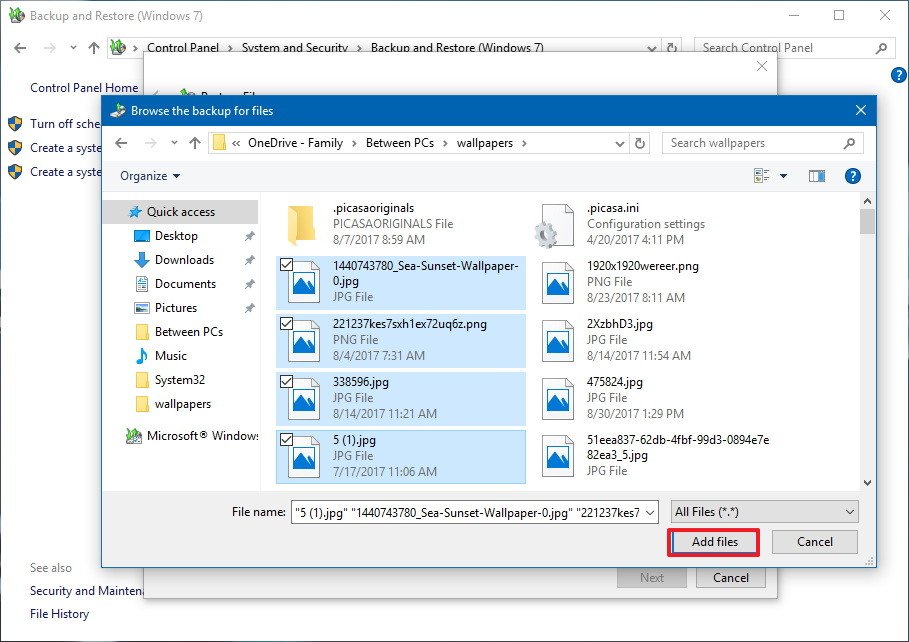
- Click the Browse for folders button.
- Browse the backup and select the folders you want to restore.
- Click the Add folders button.
- Click Next.
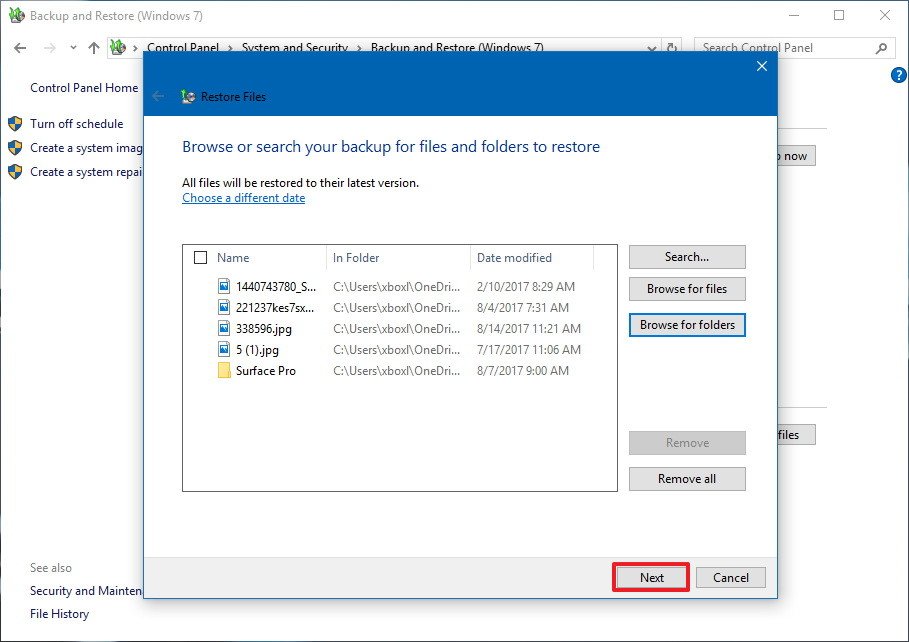
- Select the original location option. Or if you want to restore files to an alternate path, use In the following location option.
- Specify the new location.
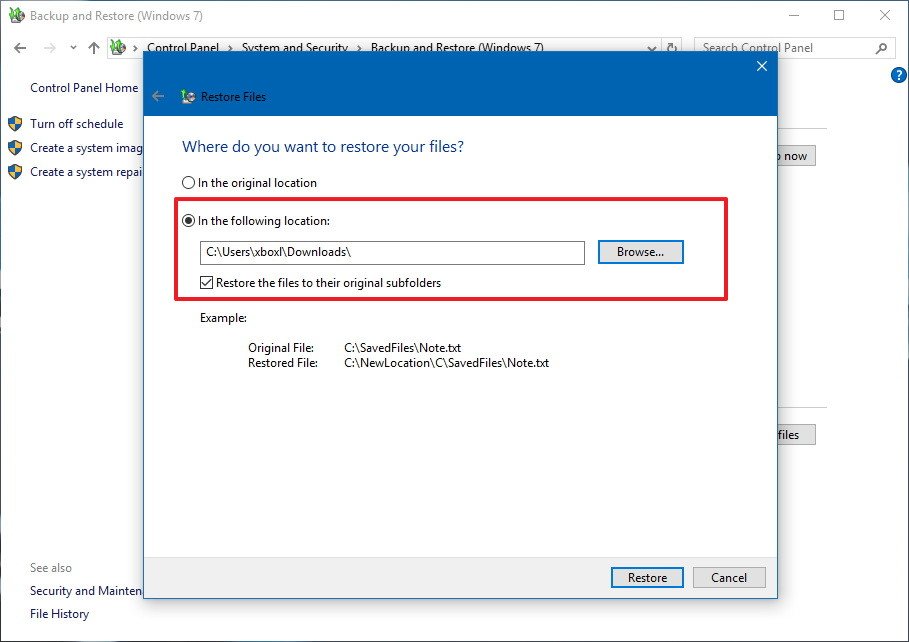
- Click Restore.
- Click Finish.
After completing the steps, your files will be available in the path you specified.
Using File History
Alternatively, if you were not able to recover your missing personal files after an upgrade using the instructions mentioned above, you may still be able to get them back using File History.
- Open Settings.
- Click on Update & Security.
- Click on Backup.
- Click the More options link.
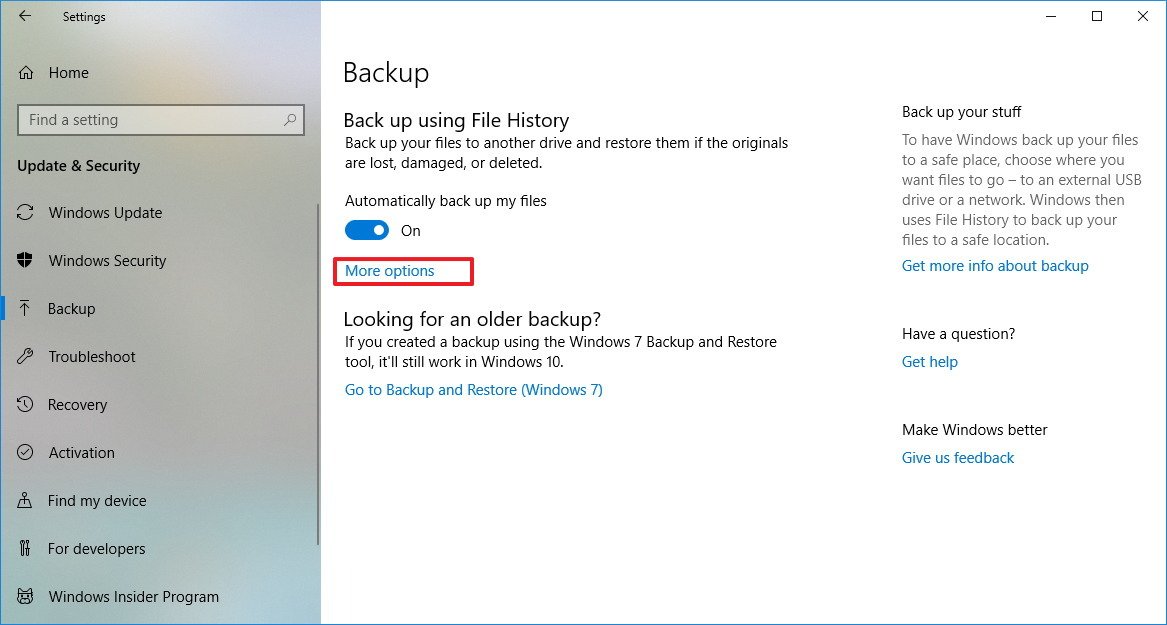
- Click the Restore files from a current backup link.
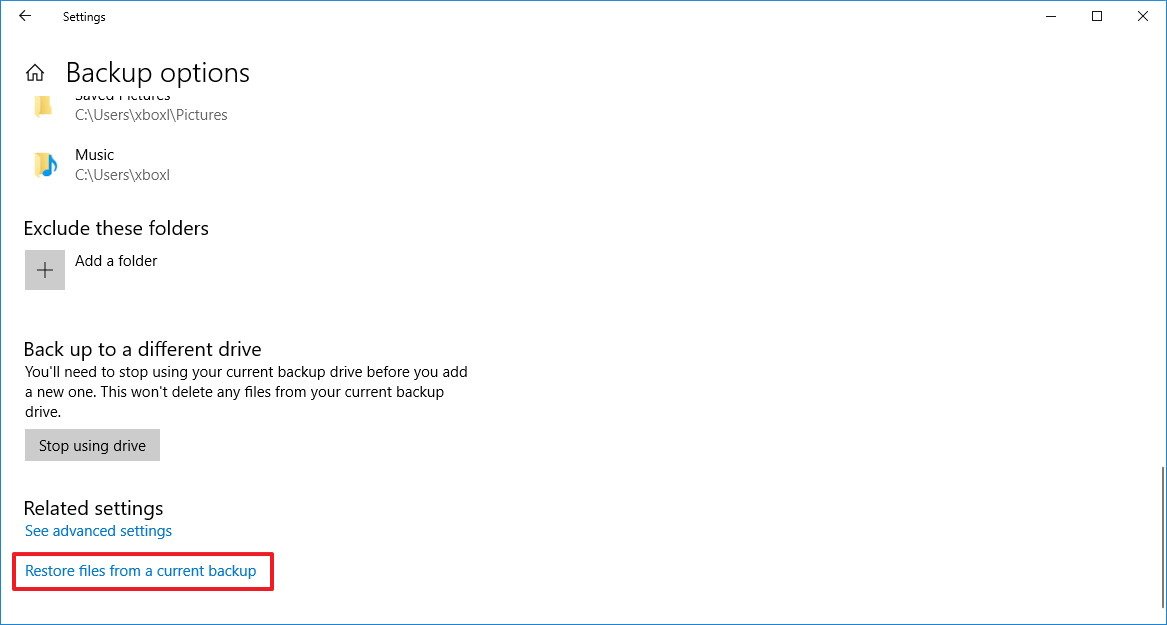
- Select the files you want to restore.
- Click the Restore button.
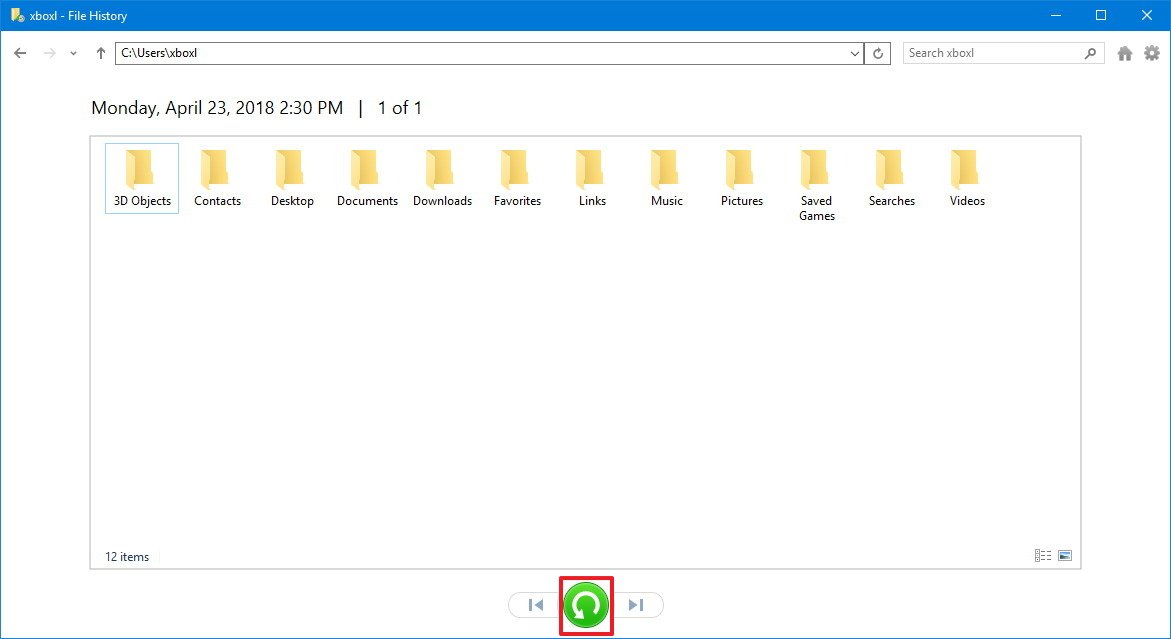
Once you've completed the steps, your lost files will be available again on your device.
Using OneDrive
If you've been using OneDrive to backup your files, you'll need to re-configure the sync client on your device. If you're using Dropbox, Google Drive, or another storage service, make sure to visit their support website to find more specific instructions.
Wrapping things up
Although the upgrade process is capable of keeping your files, it's important to acknowledge that there's always a chance that something wrong may happen. This is why it's really important to regularly create a backup of your data (at least before proceeding with an upgrade) in cases such as this one.
In addition, a backup is not only good to get your files back after an upgrade, but it can also help you recover from a hard drive failure, or after a malware infection.
More Windows 10 resources
For more helpful articles, coverage, and answers to common questions about Windows 10, visit the following resources:
- Windows 10 on Windows Central – All you need to know
- Windows 10 help, tips, and tricks
- Windows 10 forums on Windows Central
Mauro Huculak has been a Windows How-To Expert contributor for WindowsCentral.com for nearly a decade and has over 15 years of experience writing comprehensive guides. He also has an IT background and has achieved different professional certifications from Microsoft, Cisco, VMware, and CompTIA. He has been recognized as a Microsoft MVP for many years.

